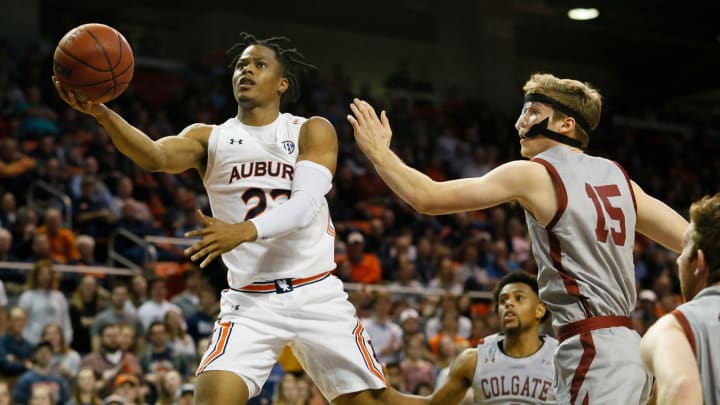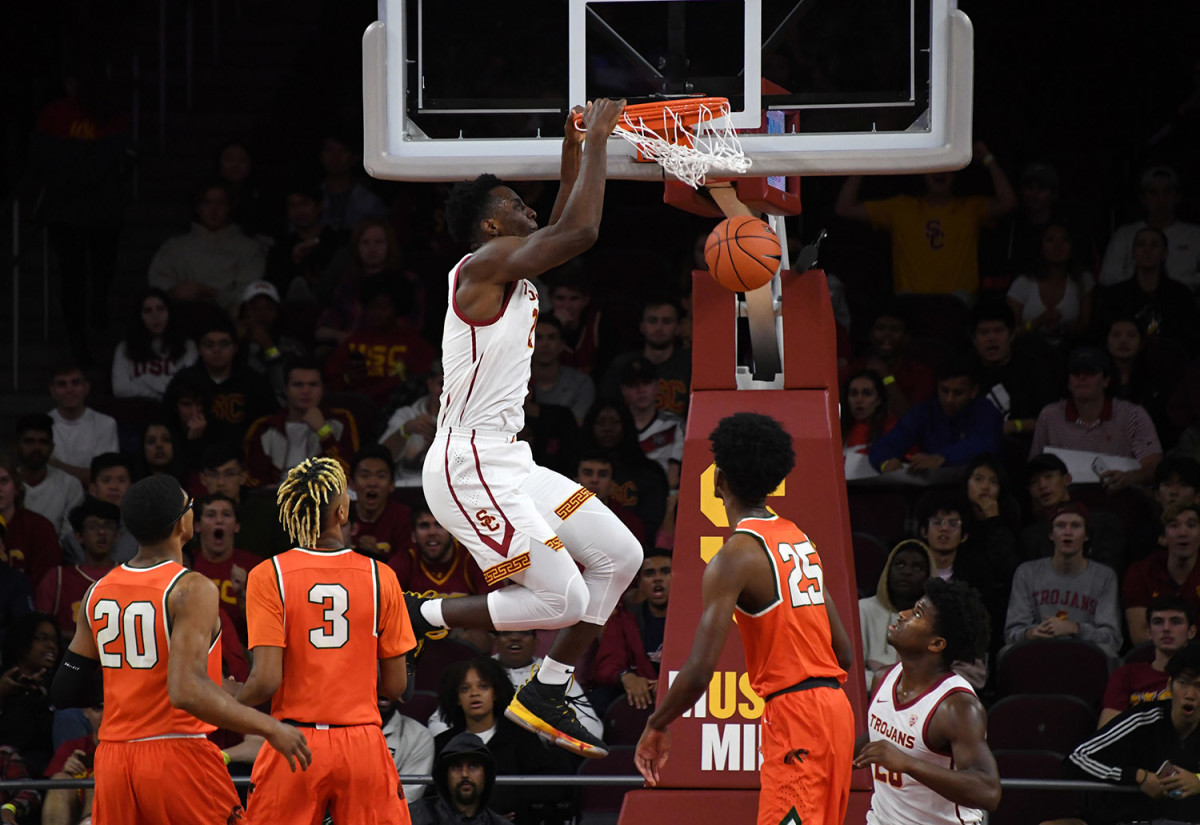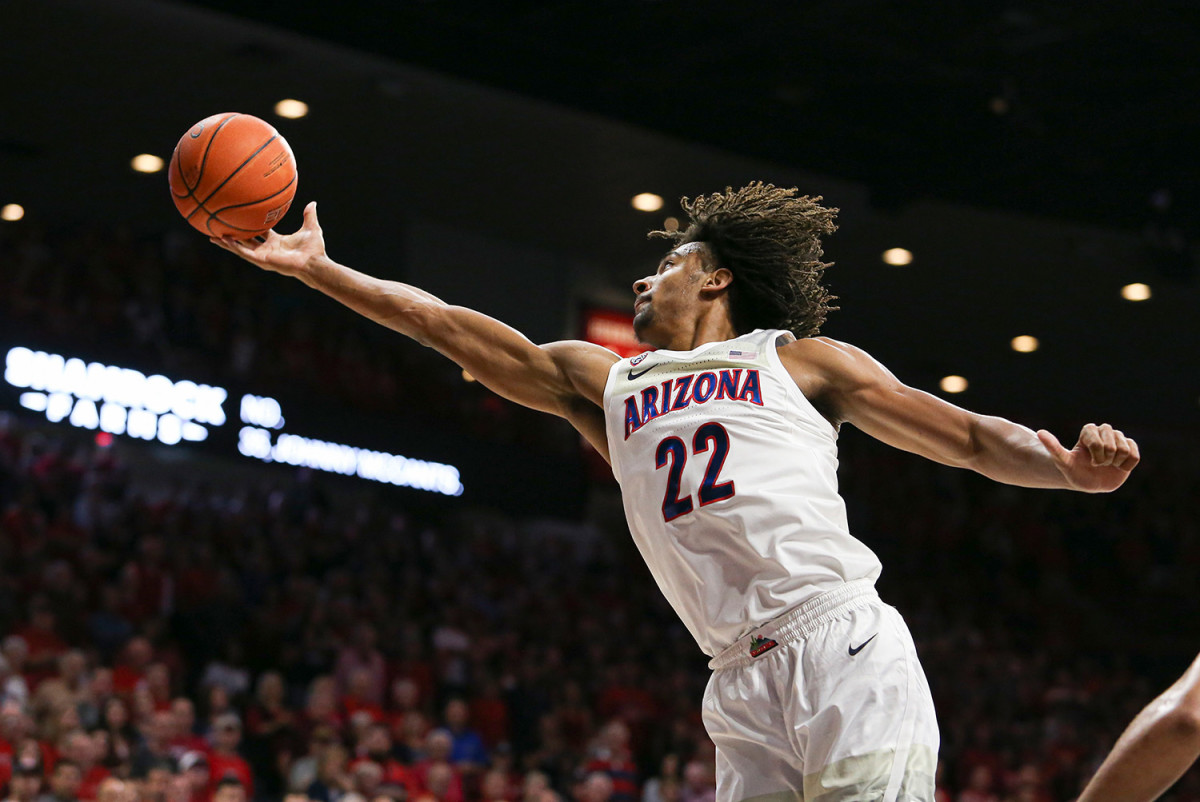NBA Draft Stock Watch: Five Freshman Playing Their Way Into the One-and-Done Picture


Without mincing words, the depth of the 2020 draft—or, more precisely, a widely perceived lack thereof—has been a central concern facing front offices dating back to the spring. For the most part, that belief has yet to shift, with a largely underwhelming first few weeks of college basketball. Top executives will spend the next couple weeks canvassing non-conference tournaments around the country, trying to piece the puzzle together.
While it’s certainly far too early in the season to pretend like anything makes complete sense, the one early trend that should offer a degree of relief is the fact that the current college freshman class has by and large performed well. There are always top players who enter college with quiet hype, particularly relative to higher-ranked peers. In that respect, this appears to be a much stronger group than expected, which may serve to beef up the middle of a draft that could wind up having a relatively flat talent curve.
At this point, it’s fair to expect that talented underclassmen on the cusp of the draft will test the waters, given that they’re permitted to sign with agents and still return to college with little to no consequence. Granted, it led to a flood of early exits ahead of the 2019 draft, with many of those players going undrafted. Looking ahead, the dynamic this time around should be no less interesting: as it stands, there’s not a whole lot separating one top college prospect from the next. Complicating matters is the fact that many teams expect the 2021 class to be loaded with talent, with a particularly strong group of current high school seniors likely turning pro and cluttering up the first round.
Given the climate, there’s a real opportunity for college prospects to play their way upward going into the 2020 draft, where there should be leeway to maximize their stock. And with that in mind, here are five freshmen playing their way into the one-and-done picture.
Isaac Okoro, Auburn
Watching Okoro play in high school, there was little question he possessed the physical traits to play in the NBA. He has always been an impactful defender on the perimeter, with a great build and substantial physical strength—he’s now listed at 6’6” and 225 pounds. For a player his size, Okoro is unusually light on his feet, capable of changing directions in pursuit, disrupting plays with his instincts, and simply occupying space from a visual perspective that takes away options for whoever he’s guarding. It’s no surprise that he’s immediately thrived within an athletic, high-pressure Auburn defense. His engine has been running at a high level each game.
Still, those were elements of his skill set that always made sense. It’s Okoro’s quality on the offensive end that’s accelerating his timeline to the pros. A series of impressive performances (albeit against inferior competition) have showcased a decent level of decision-making competence and maturity. Okoro has been opportunistic and effective attacking the basket, shooting 71.8% on two-point attempts and playing with a degree of confidence and self-awareness when it comes to shot selection. He’s strong and explosive getting downhill. Conversely, he’s not a great jump shooter, having made just 2-of-11 threes and 10-of-17 free throws through five games. Still, the simple fact he’s not a lost cause in that area helps supplement his other strengths.
As NBA teams continue on a constant search for impactful, versatile defenders, the stuff Okoro brings to the table vibes nicely. And as more highly-ranked freshman wings continue to struggle out of the gate, he stands to gain greatly this season, particularly if he can iron out some of the shooting concerns. He doesn’t figure to be at Auburn long, as things stand.
Samuell Williamson, Louisville
Expectations were somewhat mixed entering the season about how ready Williamson would be to contribute within the construct of a deep Louisville roster. He was a late bloomer in high school, but ended up making the McDonald’s All-American team, with evident potential as a scorer, nice size on the wing at 6’7”, and room to make an impact defensively over time. He’s been coming off the bench, working behind leading scorer Jordan Nwora and senior Dwayne Sutton, but has consistently impressed, producing at a good clip and showcasing some surprising breadth to his game.
The critical development here has been Williamson’s apparent willingness to do the smaller things. For the most part, he hasn’t been featured in the offense, but has made an impact on the glass and within the flow of things. The fact he’s been opportunistic and able to produce in spite of a smaller role, something highly-touted freshmen often have trouble with, speaks volumes. He’s been able to showcase outstanding touch around the rim and in the paint (65.4% on twos), in addition to his jump shooting potential (granted, he’s only attempted four threes, which bears monitoring). Williamson isn’t an elite run-jump athlete, but he’s fluid and smooth with the ball, and his offensive approach is much more mature than one might have expected. His willingness to move the ball and make simple plays has been refreshing.
It’s clear enough that Williamson is one of Louisville’s five best players, and whether or not he ends up seeing increased minutes over the course of the season, he’s showing plenty already and looks like a very appealing prospect worth developing for the long haul. It likely won’t all be smooth sailing, but his long-term potential and advanced approach has been obvious.

Onyeka Okongwu, USC
Okongwu enjoyed a highly successful career at Chino Hills, where he started for four seasons, won three state titles and overlapped with the Ball brothers, building a reputation as an extremely productive rebounder and dominant force within five feet of the basket. Through his first four college games, even against inferior competition, it’s extremely obvious that his distinct strengths translate in college, and that they bode well for his chances at finding an NBA role sooner than later. Low-maintenance bigs who are willing to rim-run, rebound, finish and protect the basket are always in high demand, particularly so with the way the league is trending. There’s little question Okongwu should be able to do all those things at a high level.
Listed at 6’9”, Okongwu won’t be the most physically imposing or most skilled center available, but at some point his sheer productivity will speak for itself. He’s explosive off the floor, leaning on unusually quick second-and-third jumps in combination with great hands and long arms to win rebounds amid chaos. Okongwu will chase down balls outside his area, alter shots and catch lobs, and while he doesn’t boast great versatility in terms of role, he’s the rare big who makes that type of impact natively, without ever needing to be fed touches. It wouldn’t be a shock if he led the country in rebounding. There’s nothing supremely nuanced about his game—he just gets it done. Teams will have to weigh how much room for growth there is here, but even without an added long-term skill component or a consistent jumper, Okongwu already has the basic tools that point to a useful role, particularly if utilized in the right system. This feels like a no-brainer.
Jahmi’us Ramsey, Texas Tech
With an NBA-type build at 6’4”, appealing toughness and a strong capacity to score, Ramsey was an obvious immediate-impact prospect coming into the season. Over the summer, he scored 44 points in an exhibition game in the Bahamas against Serbian talent factory Mega Leks, a fairly convincing bread crumb that he might be Texas Tech’s leading scorer. And, well, nothing he’s done against (clears throat) Eastern Illinois, Bethune Cookman and Houston Baptist suggests otherwise. But Ramsey’s skill set, build and intangibles create a degree of floor that seems likely to hold up over the course of the season, and he should be considered squarely on the one-and-done map at this point as a utilitarian two-guard who can fit neatly into a range of lineups. His strengths should translate somewhat cleanly at the next level.
Most impressive in the early going has been Ramsey’s capacity to catch and shoot, as he’s hit 7-of-13 threes with a clean, quick release. As long as he’s able to keep up a strong clip, it sets him up to effectively attack closeouts—he doesn’t have a particularly creative handle, but he’s comfortable going downhill on a line, knows where he’s effective and how to use his size on the interior. Ramsey is capable of some on-ball playmaking, but projects best in a secondary role long-term, and has the chops to contribute in that way off one or two dribbles. He plays an appealing, cool-headed style of offense, and to this point hasn’t had to hijack the offense at all in order to produce. Defensively, he’s big and long enough to match up with taller wing players, if not laterally quick enough to stick with all smaller, quicker guards. He’s racked up steals and rebounds by simple dint of playing hard. His overall level of poise so far points to the fact he may be ready ahead of schedule.

Zeke Nnaji, Arizona
Nnaji was the least-touted member of Arizona’s gifted freshman class, which also includes Nico Mannion and Josh Green, but his early production has been hard to miss, particularly with the landscape for intriguing long-term bigs looking somewhat barren. He’s shooting 86% on 38 two-point attempts, with ample size and touch around the basket, and his stock has skyrocketed accordingly over the first few weeks of the season. At 6’11”, Nnaji brings a great blend of mobility on both sides of the ball, can hit a midrange shot, and has been able to alter shots thus far with his activity, despite a lack of plus length. He’s produced due in large part to his competitive motor and being opportunistic around the ball, playing physically and proving a tricky matchup.
It goes without saying, as with any of the players here, that things won’t always be this easy for Nnaji as the competition improves. Scouts are still figuring him out, and his rebounding and capacity to protect the basket will be inevitably nitpicked. But playing alongside Mannion, one of the smarter guards in college basketball, should be a long-term benefit and help Nnaji stay productive. At this rate, he’s forcing the issue, and it wouldn’t be insane to think Arizona might produce three first-round picks. If he shows signs of developing into a true stretch big, there’s some real intrigue here.
